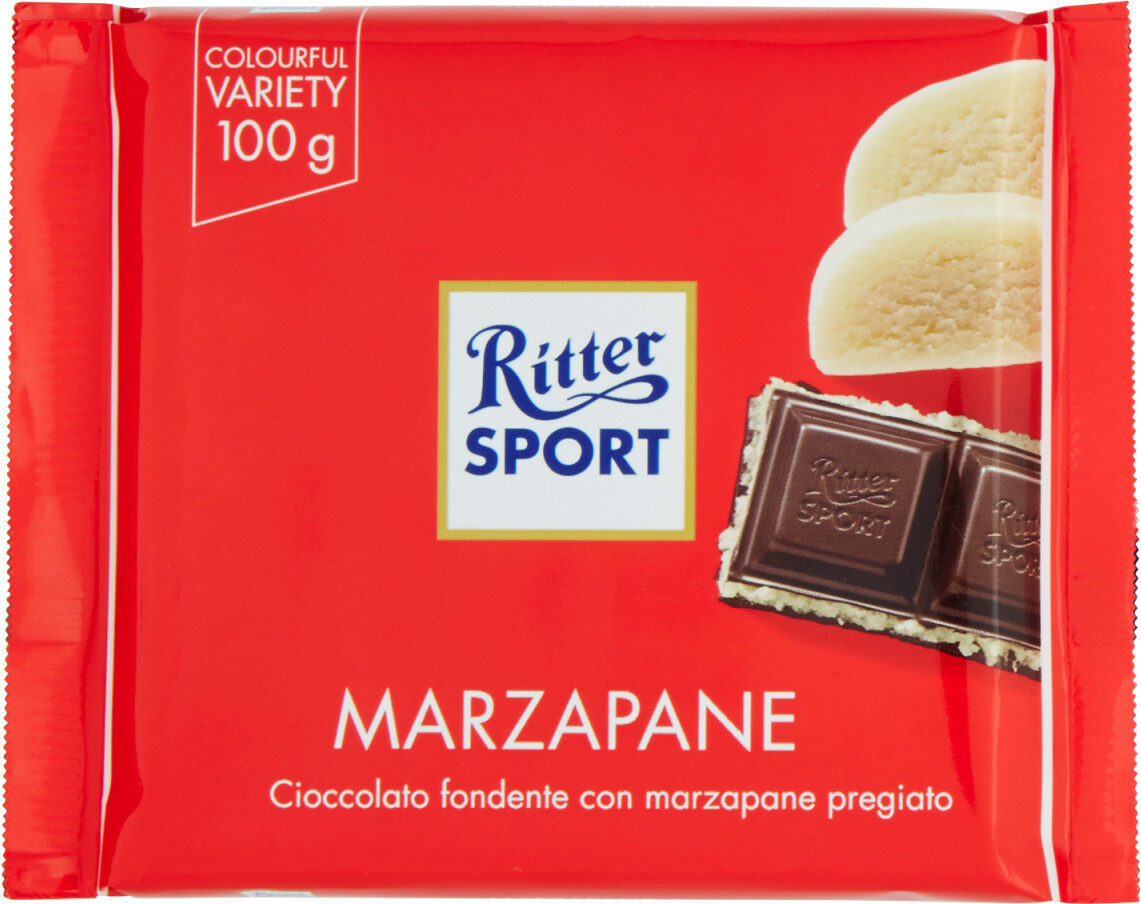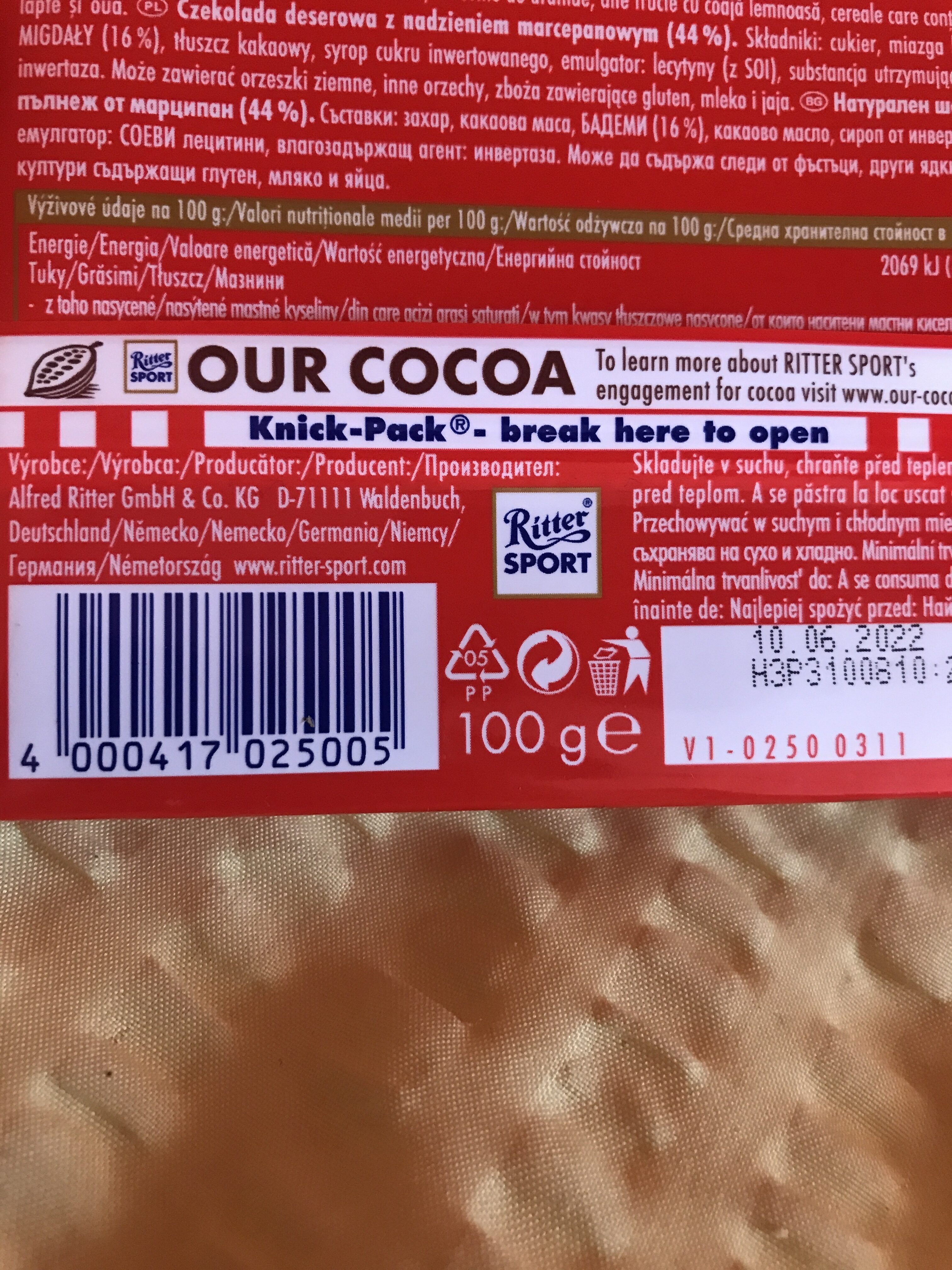Schokolade Marzipan - Ritter Sport - 100g
This product page is not complete. You can help to complete it by editing it and adding more data from the photos we have, or by taking more photos using the app for Android or iPhone/iPad. Thank you!
×
Barra-kodea: 4000417025005 (EAN / EAN-13)
Izen arrunta: Dark chocolate with marzipan filling
Kopurua: 100g
Ontziratzea:
en:Plastic, PP, en:Green dot, en:Mixed plastic-packet
Markak: Ritter Sport
Kategoriak: en:Plant-based foods and beverages, en:Plant-based foods, en:Snacks, en:Sweet snacks, en:Cocoa and its products, en:Chocolates, en:Dark chocolates, en:Filled chocolates, en:Chocolates stuffed with almond paste, en:Filled dark chocolates
Etiketak, ziurtagiriak, sariak:
en:Vegetarian, en:Vegan, en:Green Dot, en:Rainforest Alliance

Manufacturing or processing places: Deutschland
Link to the product page on the official site of the producer: http://www.ritter-sport.de/en/products/d...
Dendak: Lidl, Irma.dk, Delhaize, REWE, Eurospar, Спар, Пятёрочка, Перекресток, Магнит, Визит, Сам Самыч, Willy's, Соседи, Netto, Σκλαβενίτης
Saltzen diren herrialdeak: Frantzia, Grezia, en:Allemagne, en:Belgique, en:Biélorussie, en:Bulgarie, en:Danemark, en:Espagne, en:Pologne, en:Roumanie, en:Royaume-Uni, en:Russie, en:République tchèque, en:Slovaquie, en:Suède
Matching with your preferences
Report a problem
Datuen iturria
Product added on by stephane
Last edit of product page on by planteuser.
Produktuaren orria -gatik editatua alex-ustas, aquilax, arc2, blazern, bleakpatch, countrybot, date-limite-app, ecoscore-impact-estimator, emiljunker, foodrepo, foodvisor, hale, humenike, inf, javichu, kakao, kiliweb, m123, magerharz, mathias, maylord, moon-rabbit, musarana, openfoodfacts-contributors, packbot, prepperapp, quechoisir, quentinbrd, risajanda, sebleouf, sil, spotter, swipe-studio, tacite, tacite-mass-editor, teolemon, thaialagata, twoflower, yuka.Uy9zZ0FmODlwLzhEcGRndndDSHo4L1owNVlXN1VIeTNPODhKSVE9PQ, yuka.ZmJzUVM0QTZxNkl3eE5vVDFTM0V5dGg0d3JXMmZHZUpLZll1SVE9PQ, yuka.sY2b0xO6T85zoF3NwEKvlmhub-rvoheZFj3UhUvQ_MzfDr-4TcNAspbiY6s.













